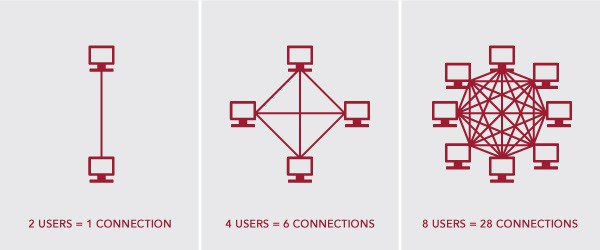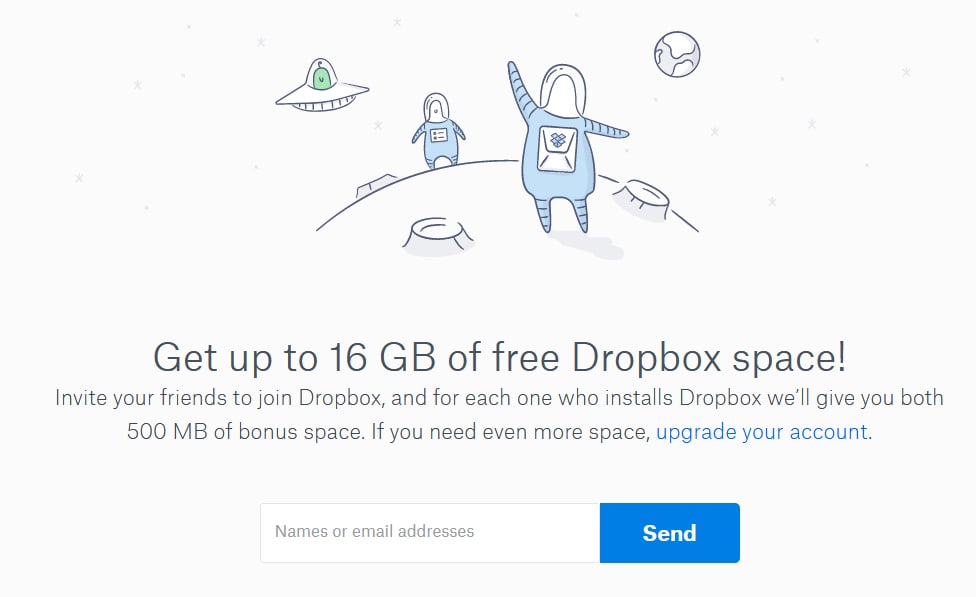- Paid
- Viral
- Sticky
Comes from Eric Ries’s book – The Lean Startup.
They’re not mutually exclusive and could work together to help a business grow. However, some will work better than others for certain types of products/services. This article will dive into what to focus on depending on your business offering(s).
Paid
The paid engine of growth is one that most of us are familiar with – Ads (Online/TV/Radio).
However, it’s a misnomer to associate this method of growth as solely reliant on your spending power. There are a variety of other channels that fall under the Paid category that could also be secured through partnerships, in-kind exchanges, or gifts.

Visual Merchandising: Increasing visibility through strategic placement of products in your storefront/high traffic areas.

Product Placement: Most commonly seen in movies.
Influencer marketing is also a form of product placement.

Direct Sales: Promoting at tradeshows, events, conferences, or selling face-to-face.
Who does it work best for?
When your customer can easily understand the inherent value of your product/service without having need to experience it first-hand.
Paid is interruptive in nature and aims to increase exposure and awareness in order to attract more customers.
- Naturally, products, especially ones with strong visual appeal/design benefit the most from this engine.
- Services could too if they’re unique, specialized, or localized enough. A good copywriter is essential if you choose to pursue this engine as a service business.
As you experiment with this engine, pay close attention to your CAC (Customer Acquisition Cost) per channel and optimize to focus on channels that are giving you the best ROI.
Viral
Growth through referrals or person-to-person transmission.

Network Effects: Often seen in marketplaces where new users are encouraged to sign up as a side effect of existing user’s usage.
Facebook, LinkedIn, Tinder are some prime examples.

Reviews: Leveraging social proof to build trust.
Who does it work best for?
If your customers have to experience the product/service first-hand before they can understand/see its value.
Or:
- If it’s hard for people to understand how you’re different from competitors (perhaps you’re doing the exact same thing, but much better quality/service).
- If your solution is something that customers aren’t aware of.
Innovative and novel solutions, life changing programs, or consulting services tend to benefit most from this engine.
NPS (Net Promoter Score) is you key metric for this engine.
To dive more into ideas and strategies in this category, read Jonah Berger’s book – Contagious: Why Things Catch On
Sticky
Growth through retention – as they say “It’s cheaper to keep a customer than it is to acquire one”
That said, it would be a mistake to solely focus on reducing churn at all cost. Companies that do this blindly fall into dark design practices where they make it difficult for their users to unsubscribe/cancel their services and inadvertently ruin the customer’s experience.
Lars Lofgren also makes a clear point in his article here, that growth will eventually plateau if you ONLY focus on churn as it will eventually catch up to your acquisition rate. Growth is only possible if acquisition > churn. Assuming acquisition remains constant, you can still achieve negative churn through increasing existing customer value through upsells. That said, Lars does mention in his previous article that “The revenue growth from negative churn pales in comparison to any half-decent growth engine. Negative churn will only give you marginal gains.”

Integrate: It becomes harder to switch to an alternative solution the more yours is integrated with their ecosystem.
Apple does this really well with how all their different devices integrate with each other, can only be serviced/fixed by trained Apple technicians, and through their software offerings like iCloud, iTunes, App Store.
Integration can also happen through products/services that you don’t provide. The more your solution is part of a process, the harder it is to switch as they need to consider impacted workflows. Zapier is a prime example of this.
Word-of-mouth though similar to viral, is actually categorized under sticky if it encourages increased usage of your product/service.

Network Effects: Again, but this time as a reflection of how it becomes harder to churn if you have already built and invested into existing relationships within a network.
If your product/service isn’t a marketplace, you can still leverage this by fostering a thriving community around your cause. GoPro and RedBull have both done an amazing job building a network of action and extreme sports enthusiast.

Referral Campaigns: Best done as credits/increased usage of your product/service instead of cash to further increase usage/spending with you.

Brand Trust: People buy from and stay with people/companies that they trust. Naturally, the longer you’ve been in the market, the better.
Trust can also be cultivated through thought leadership or by exhibiting an uncompromising stance which reflects your values.
Nike is a good example:
They backed Naomi Osaka amidst her withdrawal from the French Open tournament citing mental health issues.
Backing Colin Kaepernick’s protest of racial injustice despite controversial views on patriotism.
Who does it work best for?
Subscription/Reusable/Refillable/Seasonal based products/services or if you have complementary products/services.
If you have a single use product/service, consider:
- Pivoting to or offering something that’s more recurring.
- Expanding your offerings for upselling/cross-selling.
- Creating a complementary collection/series (for products)
To optimize this engine, reduce churn, implement exit surveys, and optimize customer LTV (Lifetime Value).

Pingback: Advisory Email – Jul 2022 - ClassyNarwhal